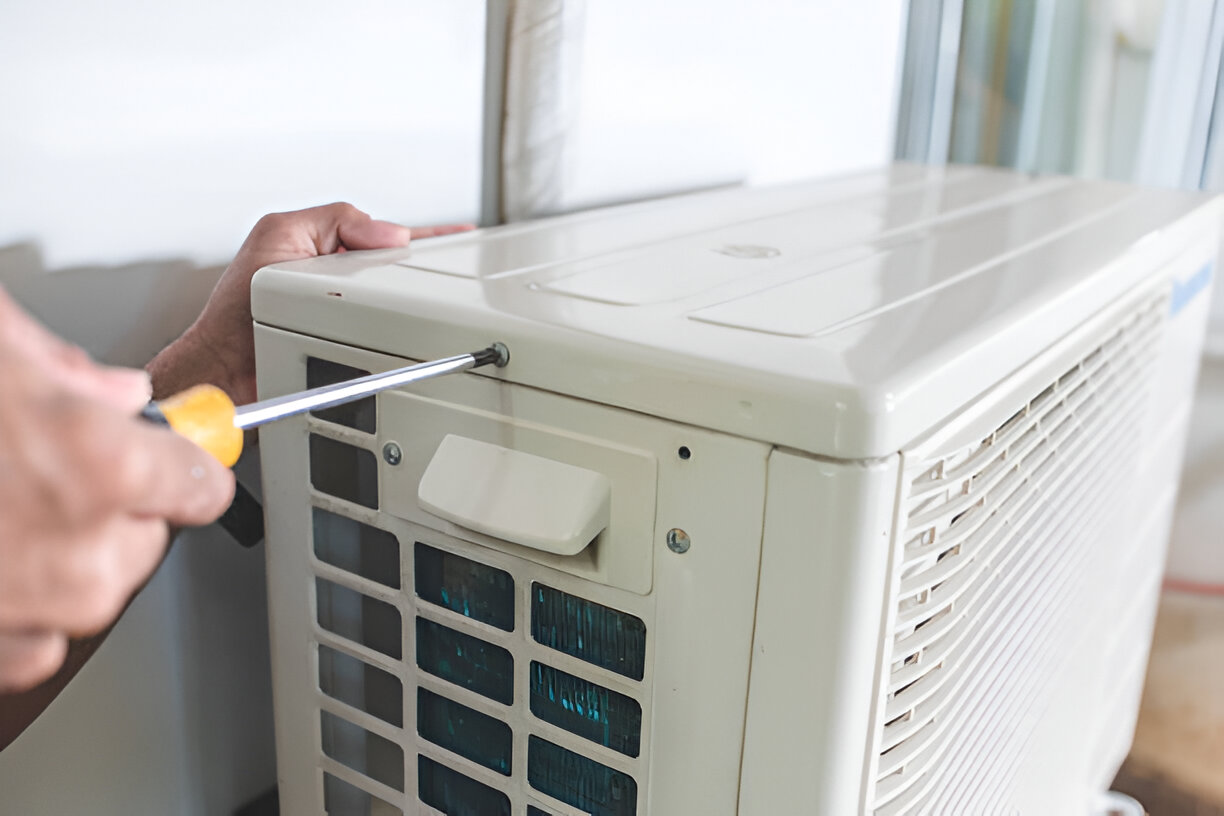Heat Pump Installation in Paradise Valley, AZ
A professionally installed heat pump delivers year-round comfort and lower energy bills for Paradise Valley homes that face hot summers, mild winters, high solar gain, and large open floor plans. Proper installation starts with accurate sizing, thoughtful equipment selection, and careful on-site work to avoid common issues like short cycling, poor dehumidification, and uneven temperatures — problems that can be especially noticeable in desert-climate homes with high cooling loads and attic heat gain.

Common heat pump needs in Paradise Valley homes
- Replacing aging air conditioners or dual systems to gain heating capability and higher efficiency.
- Upgrading undersized systems that cannot keep up during peak summer temperatures.
- Installing ductless mini-splits for room additions, sunrooms, or guest casitas where running ductwork is impractical.
- Converting older systems to modern, inverter-driven heat pumps for quieter operation and better part-load efficiency.
- Electrical panel or ductwork upgrades required to support new equipment and meet local code.
On-site consultation and load calculations
A proper heat pump installation begins with an on-site consultation and accurate load calculation:
- Manual J load calculation to determine the exact cooling and heating capacity your home needs, accounting for insulation, window orientation, shade, attic temperatures, and pool or spa heat gain.
- Manual D duct design review to confirm duct sizes and airflow needs, plus a blower door or duct leakage assessment when ducts are present.
- Electrical capacity review to ensure the panel and disconnect can support a new 240V heat pump, and to identify required safety devices.
These steps prevent common problems like oversized equipment, poor humidity control, and short cycling.
Selecting the right energy-efficient heat pump model
Choose equipment matched to Paradise Valley’s climate and your home’s usage patterns:
- Look for high SEER and HSPF ratings for summer cooling and mild-winter heating efficiency. Variable-speed inverter compressors provide better humidity control and lower running costs.
- Decide between ducted air-source systems and ductless mini-splits based on existing ductwork and layout. In most Phoenix-area homes, high-efficiency air-source heat pumps are the practical choice; ductless systems excel for targeted comfort.
- Consider brands and models rated for desert conditions with robust coil coatings, corrosion-resistant components, and strong manufacturer support. Registration with the manufacturer often secures extended warranty coverage.
Detailed installation steps (what to expect)
A professional installation follows industry best practices and code requirements at each stage:
- Site preparation
- Remove old equipment and prepare condenser pad or platform with proper clearance and vibration isolation.
- Ensure condensate routing and roof or slab penetrations are waterproofed.
- Ductwork and airflow verification
- Inspect, seal, and, if needed, resize ducts; install or verify return paths and proper insulation.
- Verify blower motor compatibility and calibrate fan speeds for correct CFM.
- Electrical work
- Install dedicated breakers and disconnects; verify proper grounding and surge protection as required.
- Coordinate any panel upgrades with licensed electricians and local inspections.
- Refrigerant handling and piping
- Recover and properly dispose of old refrigerant per EPA rules.
- Install correct line set length, properly insulate suction lines, pressure test, evacuate to required vacuum, and charge to manufacturer specifications using superheat/subcooling methods.
- System setup and commissioning
- Configure controls, thermostats (including zoning or smart thermostats), and communication between indoor and outdoor units.
- Perform final airflow, temperature split, and electrical amp draw tests. Document results and explain system operation to the homeowner.
Expected timelines
- Single-zone ducted or ductless systems: typically 6–12 hours of on-site labor for a straightforward swap.
- Multi-zone systems or larger homes requiring ductwork or electrical upgrades: commonly 1–3 days.
- Permitting and inspections can add additional days depending on municipal schedules. Complex jobs (panel upgrades, extensive duct repairs) may require multiple visits.
Warranty and manufacturer information
- Typical manufacturer warranties include limited parts and compressor coverage ranging from 5 to 10 years; extended warranties may be available.
- Warranty validity often requires professional installation and timely equipment registration. Proper installation practices and documentation (installation checklist, start-up measurements) protect warranty claims and long-term performance.
Financing and rebate options
- Many homeowners use available financing plans or flexible payment programs to spread the cost of high-efficiency heat pumps.
- Federal tax credits, state incentives, and local utility rebates can lower net costs for qualifying equipment. Eligibility varies by model, efficiency rating, and program timing; reviewing current incentives with your installer or utility is recommended.
Post-installation testing and performance verification
A thorough commissioning process verifies performance and efficiency:
- Measure temperature differentials (supply vs return), verify correct airflow (CFM), and confirm refrigerant charge using superheat/subcooling methods.
- Check electrical loads, safety controls, defrost cycle operation, and noise/vibration levels.
- Provide a homeowner checklist covering thermostat programming, filter care, and expected operating sounds.
Recommended maintenance for long-term efficiency and reliability
- Schedule professional tune-ups at least once a year (ideally spring for cooling and fall for heating) to inspect refrigerant levels, electrical connections, and coil cleanliness.
- Replace or clean filters monthly to quarterly, depending on usage and indoor air quality.
- Keep outdoor units clear of debris, trim vegetation to maintain airflow, and ensure condensate drains remain unobstructed.
- Periodic duct sealing and insulation checks preserve efficiency for ducted systems.
In Paradise Valley’s hot, sun-exposed environment, a correctly sized and professionally installed heat pump delivers consistent cooling performance, improved dehumidification, and lower energy use compared with older systems. When combined with careful load calculations, quality equipment selection, diligent commissioning, and routine maintenance, a heat pump becomes a reliable, efficient backbone of year-round home comfort.
Customer Testimonials
Hear directly from our customers about the quality, honesty, and care we bring to every job.










